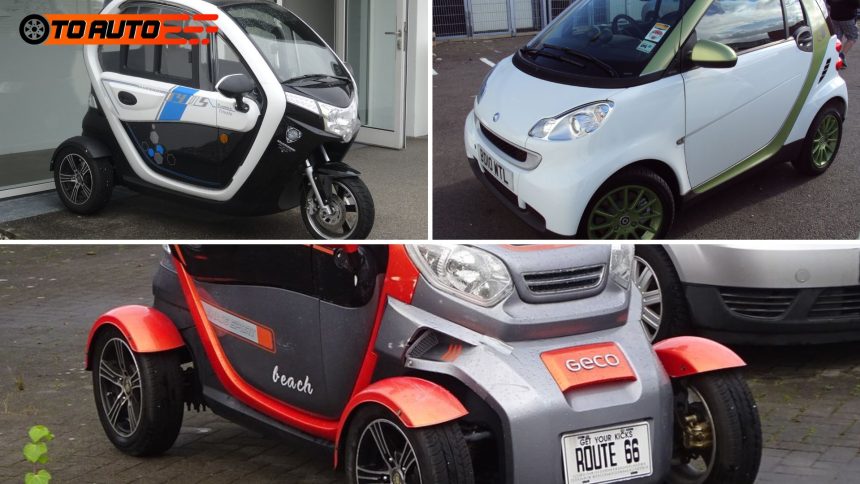As urban areas become more congested and environmental concerns rise, compact electric cars are gaining popularity as the ideal solution for city driving. These vehicles offer the perfect blend of efficiency, convenience, and eco-friendliness, making them increasingly attractive to urban dwellers. The surge in demand for compact electric cars is shaping the future of transportation, providing a sustainable alternative that meets the unique needs of city life.
The Growing Demand for Compact Electric Cars
Urbanization and Its Impact on Transportation
The world is rapidly urbanizing, with more people moving to cities in search of better opportunities and a higher quality of life. This trend has led to increased traffic congestion, air pollution, and a greater demand for efficient transportation solutions. Compact electric cars are emerging as the answer to these challenges, offering a way to navigate crowded city streets while reducing one’s carbon footprint.
Urban environments often present unique driving challenges, such as limited parking, heavy traffic, and short commutes. Compact electric cars are designed to excel in these conditions, offering easy maneuverability, quick acceleration, and the ability to fit into tight parking spaces. As a result, these vehicles are becoming a preferred choice for city dwellers who need a practical and environmentally friendly mode of transportation.
Environmental Benefits Driving Popularity
One of the main reasons behind the rise of compact electric cars is their environmental impact. Traditional vehicles contribute significantly to air pollution and greenhouse gas emissions, which are major concerns in densely populated urban areas. Compact electric cars produce zero tailpipe emissions, helping to improve air quality and reduce the urban heat island effect. This makes them an attractive option for eco-conscious consumers and governments alike.
In addition to their immediate environmental benefits, compact electric cars also support broader sustainability goals by reducing reliance on fossil fuels. As cities around the world implement stricter emissions regulations and invest in green infrastructure, the demand for electric vehicles—particularly compact models—is expected to grow even further. This shift towards cleaner transportation options is a key factor in the increasing popularity of compact electric cars for city driving.
Read More: Top 5 Used Electric Cars That are Reliable for Your Daily Drives
Advantages of Compact Electric Cars for City Driving
Efficient Use of Space
Space is at a premium in urban areas, where every square foot counts. Compact electric cars are designed with this in mind, offering a smaller footprint that makes them easier to park and maneuver through crowded streets. Their compact size allows them to fit into parking spaces that larger vehicles cannot, making them a convenient choice for city dwellers who often face parking challenges.
Moreover, the efficient use of space in compact electric cars extends to their interiors. Many models are designed to maximize passenger comfort and cargo capacity despite their small size. This means that drivers can enjoy the benefits of a compact vehicle without sacrificing practicality or comfort, making compact electric cars an ideal option for city driving.
Lower Operating Costs
Another significant advantage of compact electric cars is their lower operating costs compared to traditional gasoline-powered vehicles. Electric cars are more energy-efficient, converting a higher percentage of their stored energy into driving power. This efficiency translates into lower fuel costs, as electricity is generally cheaper than gasoline, especially in urban areas with abundant charging infrastructure.
In addition to savings on fuel, compact electric cars typically have lower maintenance costs. With fewer moving parts and no need for oil changes, these vehicles require less frequent servicing, reducing the overall cost of ownership. For city dwellers who may be looking for cost-effective transportation options, compact electric cars offer a compelling solution that aligns with their budget and sustainability goals.
The Evolution of Compact Electric Cars
Advances in Battery Technology
The rise of compact electric cars has been fueled by significant advances in battery technology. Modern electric vehicles are equipped with batteries that offer longer ranges and shorter charging times than earlier models. This has made electric cars more practical for daily use, even in cities where drivers may need to make frequent short trips throughout the day.
Improved battery efficiency also means that compact electric cars can travel longer distances on a single charge, reducing the need for constant recharging. This is particularly important for city drivers who may not have immediate access to charging stations at all times. As battery technology continues to evolve, compact electric cars are expected to become even more versatile and convenient, further boosting their appeal.
Increased Variety and Availability
As consumer demand for compact electric cars has grown, so has the variety of models available on the market. Today, there are numerous options to choose from, ranging from budget-friendly models to premium offerings with advanced features. This increased availability means that there is likely a compact electric car to suit every driver’s needs and preferences.
Automakers are also investing in the development of new and innovative compact electric cars that cater specifically to urban drivers. These vehicles often feature the latest technology, including smart connectivity, advanced safety systems, and energy-efficient designs. The growing variety of compact electric cars not only provides consumers with more choices but also drives competition and innovation within the industry.
Challenges and Considerations
Charging Infrastructure in Urban Areas
While compact electric cars offer many benefits for city driving, one of the challenges that remain is the availability of charging infrastructure. In densely populated areas, finding a convenient and accessible charging station can sometimes be difficult, especially for drivers who live in apartments or lack access to private parking spaces. This issue highlights the need for continued investment in public charging infrastructure to support the growing number of electric vehicles on the road.
Cities and governments are increasingly recognizing the importance of expanding charging networks to accommodate the rise of compact electric cars. Initiatives such as installing more public charging stations, integrating charging facilities into new developments, and offering incentives for home charging installations are all steps being taken to address this challenge. As infrastructure improves, the convenience and practicality of compact electric cars for city driving will only increase.
Range and Battery Life
Another consideration for those interested in compact electric cars is the vehicle’s range and battery life. While advancements in battery technology have significantly improved range, it’s important for drivers to choose a model that meets their specific needs. For example, city drivers who typically travel short distances may not need a long-range vehicle, but they should still consider the frequency of charging and how it fits into their daily routine.
Battery life is also an important factor, as the capacity of an electric car’s battery can degrade over time. This can affect the vehicle’s range and overall performance. When purchasing a compact electric car, it’s essential to research the battery’s expected lifespan and any warranties or guarantees offered by the manufacturer. Understanding these factors can help drivers make an informed decision and ensure that their vehicle remains reliable for years to come.
The Future of Compact Electric Cars
Continued Growth and Innovation
The future of compact electric cars looks bright, with continued growth and innovation on the horizon. As more consumers embrace electric vehicles, automakers are likely to introduce even more models and features tailored to the needs of city drivers. This includes further advancements in battery technology, increased range, and faster charging times, all of which will enhance the practicality and appeal of compact electric cars.
In addition to technological advancements, the rise of autonomous driving technology is expected to play a significant role in the evolution of compact electric cars. Autonomous vehicles, particularly in urban settings, can improve traffic flow, reduce accidents, and enhance the overall efficiency of city transportation systems. As these technologies develop, compact electric cars are well-positioned to be at the forefront of this transformation.
The Role of Policy and Regulation
Government policies and regulations will also shape the future of compact electric cars. Many cities and countries are implementing stricter emissions standards and offering incentives for electric vehicle adoption, which will likely accelerate the shift toward electric transportation. Policies that support the expansion of charging infrastructure, promote renewable energy, and encourage innovation in the automotive industry will be crucial in driving the growth of compact electric cars.
As cities continue to evolve and prioritize sustainability, compact electric cars will play an increasingly important role in creating cleaner, more efficient urban environments. By offering a practical and environmentally friendly transportation option, these vehicles are set to become a staple of city driving in the years to come.
Conclusion
Compact electric cars are on the rise as a popular option for city driving, offering a blend of efficiency, environmental benefits, and practicality. As urbanization continues and environmental concerns grow, these vehicles provide a sustainable solution that meets the needs of modern city dwellers. With advances in technology, increased availability, and supportive policies, the future of compact electric cars is bright, paving the way for a cleaner and more efficient urban transportation landscape.











